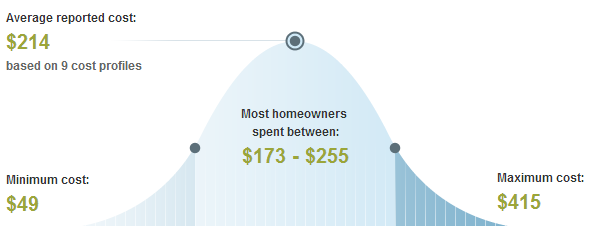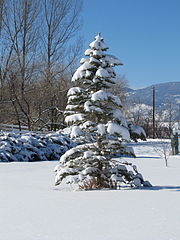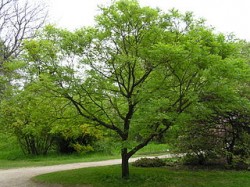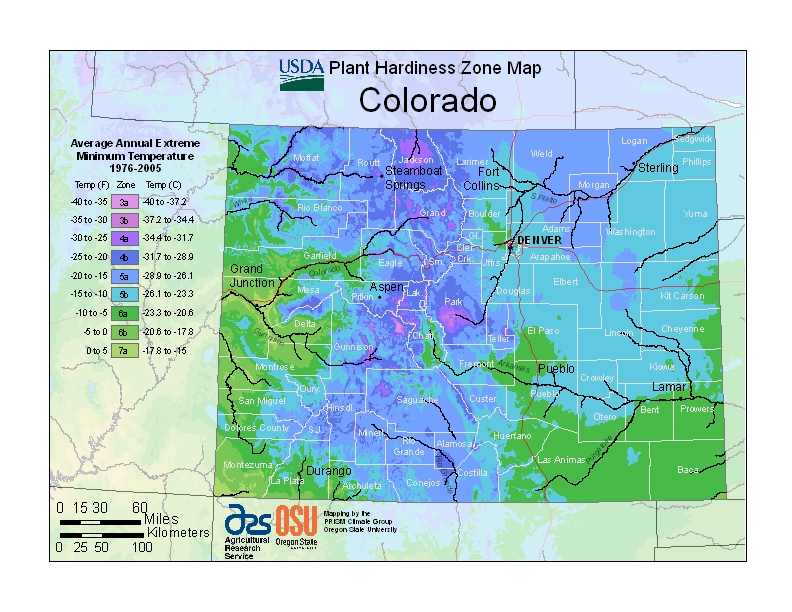Skip to a section:
- Costs – What should you be paying for tree maintenance or removal in Greeley, Colorado? What about stump removal? Find out ahead of time by using this cost guide.
- FAQs – See what trees grow best in Greeley and which don’t, along with additional information on fruit trees, pests, and tree regulations for the city before you proceed with planting any new trees.
- Services – Need more information? Contact a tree service professionals in the Greeley area using our list.
How Much Do Tree Services Cost in Greeley?
Residents of Greeley, Colorado take pride in their shade trees. It is a matter of both curb appeal and city law to maintain your trees, and have them removed when it is necessary. The following article explores tree service pricing in Greeley, discussing average costs, and the factors that shape the final bill.

Tree Removal Cost
The price of a basic tree removal has a lot to do with the characteristics of the tree to be removed, including its height, location and physical condition. The tallest trees, those in awkward locations or blocked by an obstacle, and trees that have suffered serious damage or disease will cost homeowners the most money. The average cost for removing a tree or shrub in Greeley, Colorado is about $215, based on the reports of residents. Most will spend in the ballpark of approximately $175 to $255, but for large and complex removal jobs, the sum could be as high as $415. You can expect to pay even more if you have a tree that is 75 feet high or taller.
Stump Removal Cost
Stump removal is a necessary step after having a tree cut down. The size and diameter of the stump factor into the price of removal as well as its age, soil conditions, rootstock and woody toughness. Larger stumps, rocky soil and dense root systems inflate the overall price. If the stump is very old, however, it will be easier to remove and thus cost less. On average, it costs between $78 and $140 to have a sizable stump removed and ground up by a professional.
Tree Maintenance Cost in Greeley
Tree maintenance may include, for example, trimming and pruning, fertilization, and crown cleaning. The average cost for a tree maintenance service is about $325. The majority of Greeley residents report spending in the range of $270 to $380, with the highest-priced services costing as much as $800.
Greeley Tree Facts & FAQs
For more than three decades, Greeley has been recognized as an Arbor Foundation “Tree City USA” for its commitment to sustainable urban forestry. This northern Colorado town is a haven for numerous beautiful species, including the official state tree of Colorado, the blue spruce.
Common Trees in Greeley
 With more than 5,300 trees planted in the public domain and on private properties, Greeley is a hospitable home for many kinds of landscaping trees. Among the most common species are:
With more than 5,300 trees planted in the public domain and on private properties, Greeley is a hospitable home for many kinds of landscaping trees. Among the most common species are:
- Colorado blue spruce (Picea pungens)
- Green ash (Fraxinus pennsylvanica)
- Honey locust (Gleditsia triacanthos)
- Common lilac (Syringa vulgaris)
- Black walnut (Juglans nigra)
- Golden raintree (Koelreuteria paniculata)
- Crabapple (Malus floribunda)
- Common horse chestnut (Aesculus hippocastanum)
The tallest trees in Greeley are Lanceleaf cottonwood, pecan, Kentucky coffeetree, Austrian pine, black walnut and weeping willow, according to the Colorado Tree Coalition. Small ornamental trees under 25 feet in height like the canyon maple or horse chestnut are best for sites close to power lines or by public rights-of-way such as streets and sidewalks.
Local Tree Ordinances
The City of Greeley’s Division of Forestry oversees the protection of all trees found on or by public rights-of-way such as streets, alleys and sidewalks. Planters must obtain a permit from the Community Development Department before installing landscaping on a public right-of-way.
The Forestry Program also monitors tree trimming and removal services via municipal licensing. All companies or individuals who conduct these services for trees over 10 feet tall must be licensed by the city government. Contractors approved by the City may not ‘top’ trees under any circumstances.
The Division of Forestry also mandates that elm, pine, spruce, or walnut cannot be used or stored as firewood within city limits unless the wood has been completely de-barked. This rule is designed to keep from spreading disease and insect pests that could be in the wood and would damage or destroy trees in the area.
Best Planting Practices
The city discourages planting fast-growing trees with invasive habits and promotes the planting of ‘traditional’ shade trees. Species prohibited on public rights-of-way include: poplars, willows, aspens, the box elder, the Siberian Eem, weeping types and trees with a “bushy growth habit” that preclude maintenance of a single trunk. No more than six trees of the same genus can be planted in a row. A list of discouraged species can be found at the city’s website.
Trees that will grow to over 20 feet tall at maturity must be spaced 35 feet apart from one another. Smaller trees need 25 feet. Regardless of size, no tree should be planted within 5 feet of a driveway or alley, or in a way that could conflict with overhead utility wires or other city infrastructure. No tree is allowed within 10 feet of a water or sewer service line.
Cultivating Trees on the Front Range
An hour north of Denver and about an hour east of the foothills of the Colorado Rockies, Greeley has a dry, arid desert climate, tempered by the confluence of the Poudre and South Platte Rivers. It is known for unpredictable temperature swings and heavily alkaline soil.
The local ecology has demanding growth conditions. Landscaping trees must be strong and resilient, able to withstand powerful winds, hot summers, late-winter freezes and drought.
Trees downed by snowstorms and turbulent winds have affected the electricity supply in recent years, making structural strength and resilience a planting priority in Greeley. The best time of year to prune for structural resilience is in the late winter months of January or February.
Common Fruit Trees and Tree Pests
Viable fruit-bearers in Greeley include apple trees such as the honey crisp variety and the high-performing sour pie cherry tree. As the name suggests, sour pie cultivars produce tasty, tart fruit that’s perfect for pies and jams. Peaches and cantaloupes, widespread throughout Colorado, are also grown here as are peach and plum trees.
Certain pests plague the trees in Greeley. The struggle between the ips engraver beetle and Greeley’s heritage blue spruce continues. The mountain pine beetle is harming diverse pines in the area, too, notably Scotch pine. The deadly emerald ash borer was spotted recently, generating major concern. Meanwhile, walnut trees like the black walnut have had trouble with thousand cankers disease.
Plant Hardiness Zones in Colorado
Here are the plant hardiness zones for Colorado as provided by the USDA:

Image Sources:
Colorado blue spruce
Golden raintree
Local Tree Services in Greeley
